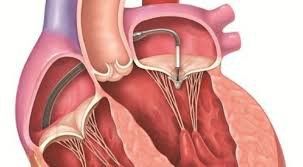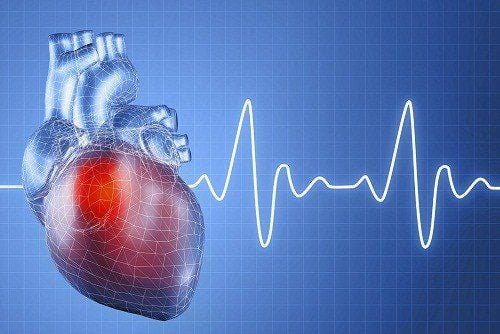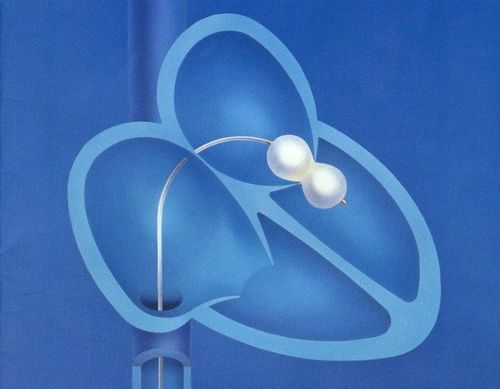This is an automatically translated article.
Is mitral stenosis dangerous? These are the concerns of many people. Let's find out more information about the complications of mitral stenosis so that we can proactively prevent and treat the disease effectively.
1. What is mitral stenosis?
Mitral stenosis is the term used to describe an abnormal condition of the mitral valve. When it cannot open fully to let blood flow from the left atrium to the left ventricle. This causes blood to pool in the left atrium, increasing the pressure that causes blood to pool in the lungs, manifesting as fatigue and shortness of breath for the patient.
Normal mitral orifice area is 4-6cm2. If the mitral orifice is less than 2cm2, then you are diagnosed with mitral stenosis.
Currently, mitral stenosis accounts for a large proportion of cases of heart valve disease. Symptoms are few and vague, within the tolerable threshold, so patients often delay in treatment. Even many people when they come to the doctor are in a severe stage, severely narrow heart valves, even heart failure.
There are many causes of mitral stenosis including:
Sequelae of rheumatic heart disease; Atherosclerotic lesions; Natural; Carcinoid tumor; Systemic lupus erythematosus; Rheumatoid arthritis ; Mucopolysaccharide deposition; Evaluation of the cause helps to treat effectively before mitral stenosis becomes more severe.
2. Symptoms of mitral stenosis
You may have mitral stenosis when you have the following symptoms:
Shortness of breath; Hoarseness of voice; Hemoptisi ; Difficulty swallowing; Stroke; Vascular occlusion; Enlarged liver; Leg edema; Distended neck veins; See your doctor if you have the above symptoms to avoid dangerous complications of mitral stenosis.
Diagnosis of mitral stenosis must be performed at specialized medical facilities. In addition to the clinical examination, the paraclinical measures are also given including:
Doppler echocardiography; Transesophageal echocardiography; ECG; Chest X-ray. After the results are available, your doctor will make a diagnosis of whether you have mitral stenosis.
3. Complications of mitral stenosis
As mentioned above, mitral stenosis is characterized by thickening of the mitral valve/margins due to calcification of the heart valve. This prevents blood in the left atrium from reaching the left ventricle. If not treated, it can cause dangerous sequelae of mitral stenosis including:
Pulmonary hypertension – complications of mitral stenosis: Mitral stenosis causes blood pressure in the arteries Pulmonary vessels overload the flow of blood from the heart to the lungs. At this time, blood can back up into the lungs causing acute pulmonary edema.
Complications of mitral stenosis causing right heart failure: Mitral stenosis causes blood vessel pressure in the lungs to increase, causing fluid retention. At that time, there is a right heart strain, which gradually causes right heart failure. If there is too much fluid and blood to the lungs, the patient may have pulmonary edema with symptoms of difficulty breathing, coughing, and spitting up blood.
Mitral stenosis causes atrial enlargement: Mitral stenosis sequelae can cause atrial enlargement. Because mitral valve stenosis prevents blood from being pushed out of the left atrium, over time, atrial enlargement occurs.
Sequelae of mitral stenosis causing atrial fibrillation: Atrial fibrillation (atrial fibrillation) – occurs when the heart has an arrhythmia or has an irregular rhythm, at which time the muscles look like they are vibrating instead of contracting as usual. often.
Mitral stenosis can cause atrial fibrillation because the heart valve is damaged, leading to a loss of blood control between the chambers of the heart. At this time, the contractile activity of the heart is affected, thereby making the heart rhythm irregular. Atrial fibrillation is a very common complication of mitral stenosis that should not be taken lightly.
Complications of mitral stenosis causing blood clots: Due to long-term stagnation of untreated blood, it will cause the formation of blood clots in the left atrium. Blood clots can rupture, following the blood stream throughout the body. Complications at this time can cause myocardial infarction, cerebral blood vessel blockage or extremely dangerous cerebral infarction.
4. Mitral stenosis when to see a doctor
Is mitral stenosis dangerous? This is a dangerous disease, so it should be monitored, evaluated and treated promptly. You should go to the doctor or be hospitalized for monitoring if you have the following symptoms:
Shortness of breath; Fatigue during exercise; Nervous; Chest pain; ... If you have been diagnosed with mitral stenosis but have no symptoms, talk to your doctor for a plan to monitor and treat
5. Prevention of mitral stenosis complications
The sequelae of mitral stenosis are unpredictable. Therefore, to prevent complications of mitral stenosis, cardiologists recommend:
Keep the oropharyngeal area clean; If there is a risk disease, it should be treated early; If mitral stenosis has been diagnosed, it should be treated early and aggressively according to the protocol; Today, the treatment of mitral stenosis is mainly medical, changing the scientific lifestyle. If mitral stenosis is severe, and medical treatment is not effective, the doctor may apply other measures aimed at the structure to restore heart valve function. Thereby, preventing the complications of mitral valve stenosis that can cause patients.
Above is the information about mitral stenosis is it dangerous? Hopefully, through the article you have better understand the sequelae of mitral stenosis, how to prevent complications... If you have any other questions about mitral stenosis, please contact your doctor for answers.
Please dial HOTLINE for more information or register for an appointment HERE. Download MyVinmec app to make appointments faster and to manage your bookings easily.













